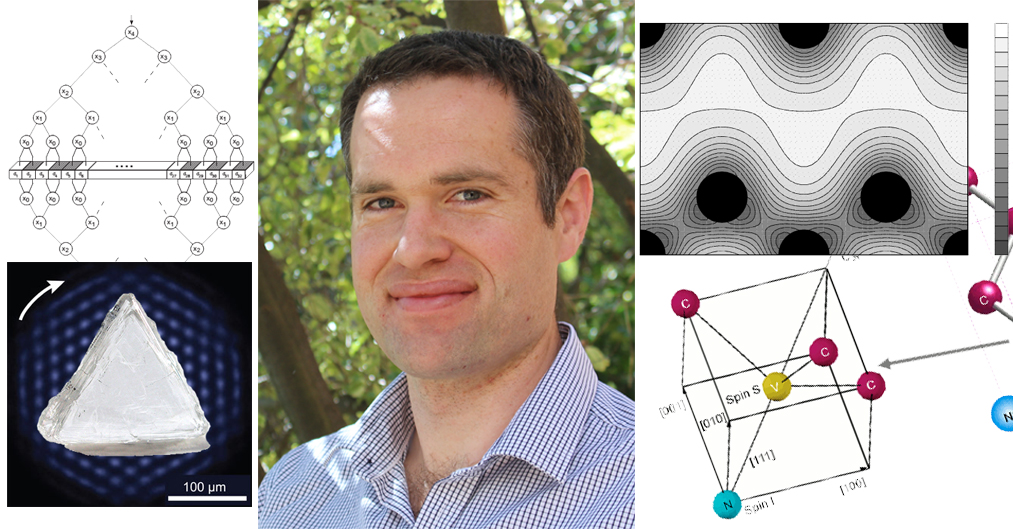The Quantum Age of Diamond – the 2015 Phillip Law Postdoctoral Award Lecture
 Dr Marcus W Doherty
Dr Marcus W Doherty
Winner, 2015 Phillip Law Postdoctoral Award for the Physical Sciences
Postdoctoral Fellow, Laser Physics Centre
Research School of Physics and Engineering
Australian National University
In recent years, diamond has been key to the exploration of a new technological paradigm: quantum technology. Quantum technologies exploit the strange laws that govern physics at the atomic scale to break the constraints seemingly set by the rules of our familiar macroscopic world.
For example, the quantum microscope exploits the quantum nature of an atom-like probe to surpass the limits of conventional microscopes. As a result, the quantum microscope offers an unprecedented view of the world at the atomic scale. In fact, diamond quantum microscopes have already found diverse applications, ranging from single-molecule magnetic resonance imaging to thermoablative cancer therapy.
Another example is the quantum computer, which employs the quantum ‘spookiness’ of being in two places at once to represent and compute information in a fundamentally new way. This radical new approach to information will allow quantum computers to solve classes of problems too difficult for current computers, such as the simulation of complex molecular systems or the factoring of the large numbers at the foundations of electronic security. Whilst quantum computers are still something of the future, many important advances have been made using diamond.
The success of diamond in quantum technology is owed to its atomic defects, whose remarkable properties allow their quantum behaviours to be precisely observed and controlled in all manner of conditions. A great deal of recent work has focussed on understanding these defects and how to engineer their properties for the next generation of quantum technologies.
This exciting period of exploration marks a new age in humankind’s use of diamond – a quantum age – and it promises much for science and society.
The 2015 Phillip Law Postdoctoral Award Winner: Dr Marcus W Doherty
The 2015 Phillip Law Postdoctoral Award for the Physical Sciences winner completed his Doctor of Philosophy with the University of Melbourne, Victoria in 2012, winning the University’s Chancellor’s Prize for Excellence in the PhD thesis for his work titled The Theory of the Nitrogen-Vacancy Colour Centre in Diamond, supervised by Professor Lloyd Hollenberg in the University’s School of Physics. Since completing his PhD, Marcus has been engaged in theoretical and collaborative research with the Laser Physics Centre at the Australian National University, undertaking further research into the properties of the colour centres in semiconductors and their applications in quantum technologies. His total citations according to Scopus and Google Scholar are 419 and 693 respectively, underpinned by extensive collaborations with world-leading research groups based at Harvard, Stuttgart, Ulm, the Carnegie Institute, Berkeley, City College New York, and the Universities of Queensland and Melbourne.
Dr Marcus Doherty’s future research will focus on demonstrating “coherent spin transport” in diamond, which is currently a major barrier in the development of solid-state quantum information processing for application in quantum computing.





